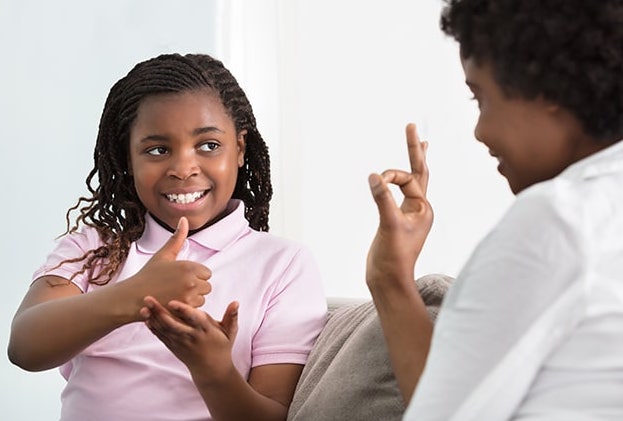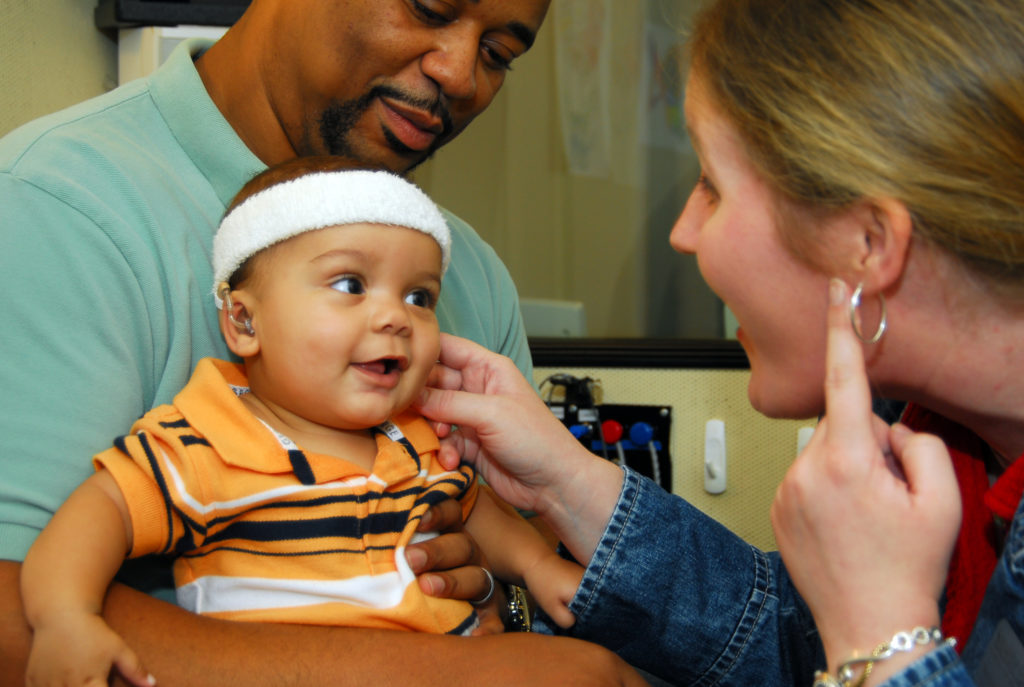American Sign Language (ASL)
Users convey critical information with their hands through the use of handshapes, locations, movements, palm orientations and non-manual grammatical signals (eyes, face, head, shoulders). Providing full visual access to communication and language, ASL can convey subtle, complex, and abstract thoughts. In short, ASL can communicate anything. For additional information about American Sign Language click on: Hands & Voices Communication Considerations: American Sign Language
State Resources:
Family Mentor Program– Office of Deaf and Hard of Hearing email: familymentorcoordinator@gmail.com
RESOURCES FOR LEARNING ASL
Local/State
Washington School for the Deaf
Visually Speaking – Visually Speaking offers a variety of classes and opportunities to learn ASL.
Online ASL Learning
ASL Nook – Words, pictures, and stories come to life with the magic of American Sign Language (ASL).
Hands Land – educational resource developed by Deaf native signers and educators from Deaf families who found joy in using visual-based rhymes and rhythms throughout the day. Find Hands Land on YouTube
Sign It! American Sign Language Made Easy
Sign On – SignOn is a “Virtual Immersion Tool”
Visual Language and Visual Learning
We believe in the importance of bridging communities together, especially in places with large and thriving Deaf & signing communities. As Deaf people, we always get asked, “Where can I learn ASL?”
Instead of facing confusing resources scattered across the internet, we wanted to make learning ASL super easy, accessible, and fun. That inspired us to create the app, so our friends who don’t sign, can sign away. So more conversations can happen, ideas to emerge, and collaborations to come!



